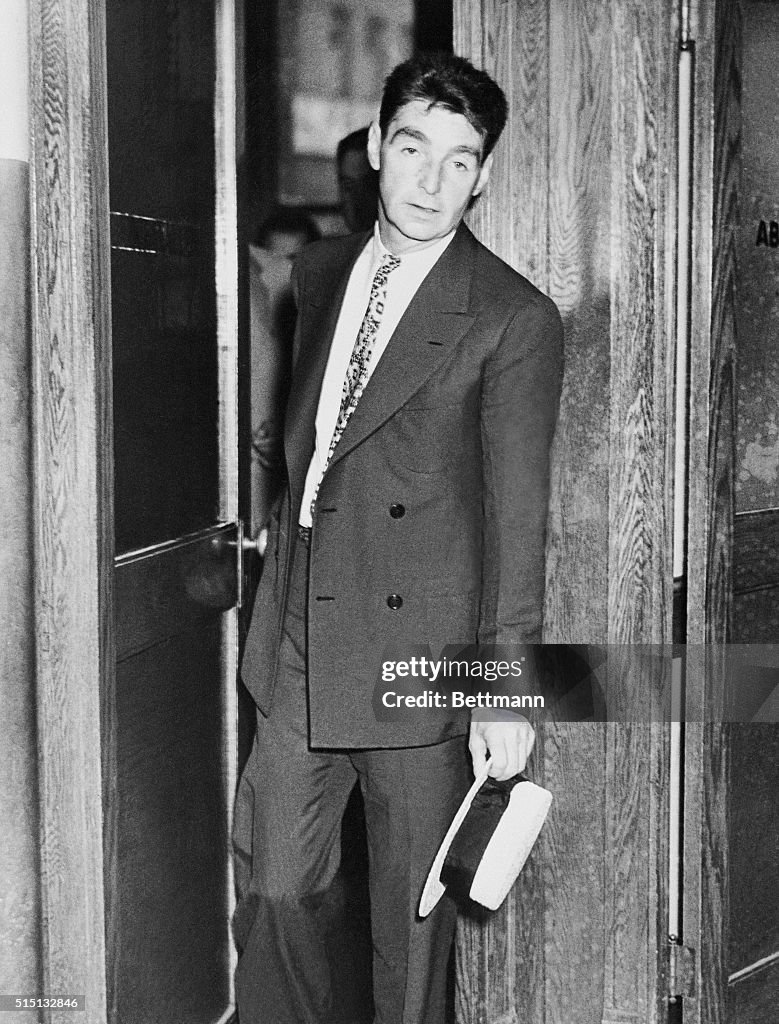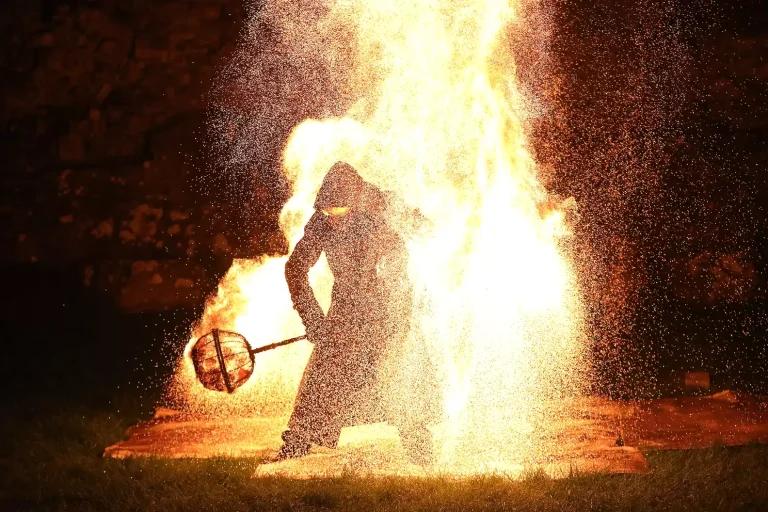
Owney Madden, once public enemy No. 1 as a gang leader in New York's Hell's Kitchen (the "Westies"), leaves the district attorney's office in New York City after testifying before a grand jury. Madden, having retired to Hot Springs, Arkansas, returned to face the probe, which was trying to determine the reason for his being on a coal company's payroll at $50 a week.

In the smoky dens of Prohibition-era New York, Owney Madden was a man of contradictions. Born into poverty in England to Irish parents, he rose to become one of the most influential—and infamous—figures in the American underworld. Known as “The Irish Godfather of Harlem”, Madden was a bootlegger, racketeer, and nightclub impresario whose name became synonymous with both ruthless ambition and glamorous decadence.
From running with street gangs in Hell’s Kitchen to presiding over Harlem’s Cotton Club, Madden’s life was a kaleidoscope of violence, power, and charisma. This is the story of a man who transformed himself from a street thug to a kingpin, leaving a legacy that still echoes in the annals of organized crime.
👉 Learn more about Dean O’Banion’s battle against the Chicago Outfit at Secret Ireland.
👉 Explore the untamed life of Vincent “Mad Dog” Coll at Secret Ireland.
👉 Discover the rise and fall of Bugs Moran at Secret Ireland.
👉 Dive into the legacy of Jimmy Coonan and The Westies at Secret Ireland.
From Leeds to Hell’s Kitchen
Owney Madden’s story begins far from the glitz of Harlem. Born in Leeds, England, in 1891, to Irish immigrant parents, Madden’s family moved to New York’s Hell’s Kitchen when he was a young boy. The neighborhood was a battleground, teeming with Irish, Italian, and other immigrant communities struggling to survive in a city that often seemed stacked against them.
Madden thrived in the chaos. By his teens, he had joined The Gophers, a notorious Irish gang that ruled the streets of Hell’s Kitchen with fists, knives, and guns. Madden’s ferocity earned him the nickname “The Killer,” and he quickly rose through the gang’s ranks. But his ambition didn’t end with petty crime—Madden had his sights set on something bigger.
Prohibition: The Making of a Kingpin
When Prohibition turned alcohol into a black-market goldmine, Owney Madden saw his opportunity. Partnering with bootleggers and corrupt politicians, Madden began smuggling and distributing illegal liquor across New York City. His operations were as efficient as they were ruthless. Rivals who dared challenge Madden often found themselves staring down the barrel of a Tommy gun—or worse.
Madden’s growing empire wasn’t limited to booze. He expanded into gambling, extortion, and other rackets, becoming one of the city’s most powerful crime bosses. His influence extended far beyond Hell’s Kitchen, reaching into Harlem, where he would make his most lasting mark.
The Cotton Club and Harlem’s Golden Era
In the 1920s, Owney Madden took control of the Cotton Club, Harlem’s most famous speakeasy. The club wasn’t just a hotspot for illegal booze—it was a cultural phenomenon, showcasing legendary performers like Duke Ellington and Cab Calloway. Madden turned the Cotton Club into a symbol of glamour and excess, attracting celebrities, politicians, and socialites.
But behind the glitz, Madden’s rule was ironclad. He controlled the club’s operations with the same ruthless efficiency that defined his bootlegging empire. The Cotton Club became a centerpiece of Madden’s power, cementing his status as one of New York’s most influential figures.
👉 Explore more about Irish-American gangsters and their empires at Secret Ireland.
Feuds, Violence, and Power Struggles
Owney Madden’s rise wasn’t without its challenges. Like Dean O’Banion in Chicago, Madden faced constant threats from rival gangs and law enforcement. His alliance with other Irish and Italian mobsters helped him maintain his grip on power, but his violent reputation made him a target.
Madden was no stranger to prison. In 1915, he was convicted of manslaughter after a gang-related murder and served several years behind bars. But even prison couldn’t dim Madden’s ambitions. Upon his release, he returned to New York stronger than ever, determined to reclaim his place at the top.
The End of an Era
By the 1930s, the tides were turning for Owney Madden. The end of Prohibition and increased pressure from law enforcement made it harder to operate in the shadows. In 1935, facing mounting legal troubles, Madden retired from organized crime and moved to Hot Springs, Arkansas, where he reinvented himself as a legitimate businessman.
But even in retirement, Madden’s influence lingered. He continued to run gambling operations and remained a fixture in the underworld, proving that once a gangster, always a gangster.
The Legacy of Owney Madden
Owney Madden’s life was a testament to the duality of the gangster myth. He was a man who rose from the slums of Hell’s Kitchen to preside over one of the most glamorous eras in New York’s history, yet his power was built on violence and exploitation. Madden embodied both the grit of the Irish immigrant experience and the darker side of the American dream.
Today, Madden’s story stands alongside those of figures like Dean O’Banion, Bugs Moran, and Vincent Coll as a reminder of the complexity of the Irish-American gangster legacy. He was a man who thrived in the shadows but left a mark that still shines in the lore of New York City.
👉 Discover the legacy of Dean O’Banion at Secret Ireland.
👉 Explore the chaotic life of Vincent Coll at Secret Ireland.
👉 Dive deeper into the Irish-American underworld at Secret Ireland.
What Owney Madden Teaches Us About Power
Madden’s life is a study in reinvention. From street thug to kingpin to retired businessman, he adapted to every challenge, finding new ways to survive and thrive. But his story is also a cautionary tale about the cost of ambition. For all his power and influence, Madden’s empire was built on a foundation of violence and fear—a foundation that could never truly last.
Sláinte to the King of Harlem
Owney Madden wasn’t just a gangster; he was a force of nature. His story, like those of his Irish-American contemporaries, is a reminder of the grit, ambition, and complexity that defined the immigrant experience in America. He may have ruled the underworld, but his legacy lives on in the folklore of New York City’s most notorious era. Sláinte, Owney.





